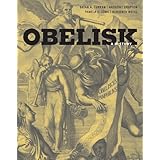
Average Reviews:

(More customer reviews)The ancient Egyptians hardly knew how influential they would be when they put up obelisks. Pyramids are, of course, more impressive, but if you build a pyramid, it is going to stay where you put it no matter what. Obelisks may weigh hundreds of tons, but they are still to some extent portable, and they have been exported, to various world capitals for various reasons. In _Obelisk: A History_ (The MIT Press), historians Brian A. Curran, Anthony Grafton, Pamela O. Long, and Benjamin Weiss tell about the origins of the obelisks, their travels, and what different societies at different times have made of them. It is a comprehensive survey, with many fine illustrations, indicating the universal appeal of these objects. The appeal is also shown by people building new ones, like the Washington Monument, or using obelisks on a mantelpiece for interior design, or using them as part of a New Age healing process. While this book touches on those new uses, it is mostly a fascinating review of the original Egyptian obelisks, mysterious objects that have retained their power over the centuries.
The classic obelisk is made out of one single stone. Any ruler who could cause such massive objects to be carved out of stone, moved from the quarry, and set upright (usually at the entrances of temples) was someone formidable. There are pictures from tombs and temples showing how the Egyptians did this, but details of the process are still mysterious. Plenty of these obelisks wound up in Rome, and were capped with crosses, but the game of borrowing this sort of glory from the ancient stones was practiced before Christianity. That the stones came from pagan sources was a worry, so part of the ceremony of installing an obelisk was to exorcise the stone. The one in St. Peter's had a bishop solemnly climb a ladder, sprinkle it with holy water, and speak a modified baptismal proclamation to it "... that you may be an exorcised stone." The obelisk had been erected in the Vatican Circus around 37 CE by Emperor Nero, but its move in 1586 (and its baptism) were necessitated by the new layout of St. Peter's. The move was a huge engineering feat, a long-running street drama that throngs appreciated. The engineers could not use any hints from their Egyptian or Roman predecessors, for the ways the ancients had moved the obelisks were long since forgotten (similar to how the language carved upon the stones had been forgotten). Domenico Fontana was the engineer of the move, which required, among other things, lowering the stone by the use of forty capstans, each with three or four horses, and all exquisitely coordinated by a trumpet blasts and bells. By the 1870s when London and New York were contemplating setting up separated twin obelisks, "Cleopatra's Needles" (they weren't Cleopatra's) from Heliopolis, the engineering task of moving the needles was still huge, but the tools had changed. In the eighteenth century, the engineers were still using the wood, rope, and iron which would have been familiar to the ancient Egyptians. By the nineteenth century, there were steam engines, steel cable, and hydraulic jacks. In London, the needle produced an outpouring of Christian sentiment, since it was claimed that Moses himself and the toiling Israelites must have looked upon the monument. The needle in New York produced, unsurprisingly, a round of advertising, like the picture of Cleopatra improbably inserting a thread into her enormous needle, and hawking Imperial Diamond sewing needles. There was also the _Grand Obelisk March_, the _Obelisk Waltz_, and the _Obelisk Polka_.
The authors in respective chapters have covered the engineering of moving the obelisks at different times, as well as the role obelisks have played in Egyptology, nationalism, magic, and crankery. There is some repetition within the chapters, excusable in such a broad overview from different authors, but the big book with its many illustrations, is not a heavy academic tome. It is a clear meditation on the symbolic power of architecture, and the fact and fancy that through the centuries people have made of these imposing and intriguing objects.
Click Here to see more reviews about: Obelisk: A History (Publications of the Burndy Library)
Click here for more information about Obelisk: A History (Publications of the Burndy Library)

0 comments:
Post a Comment